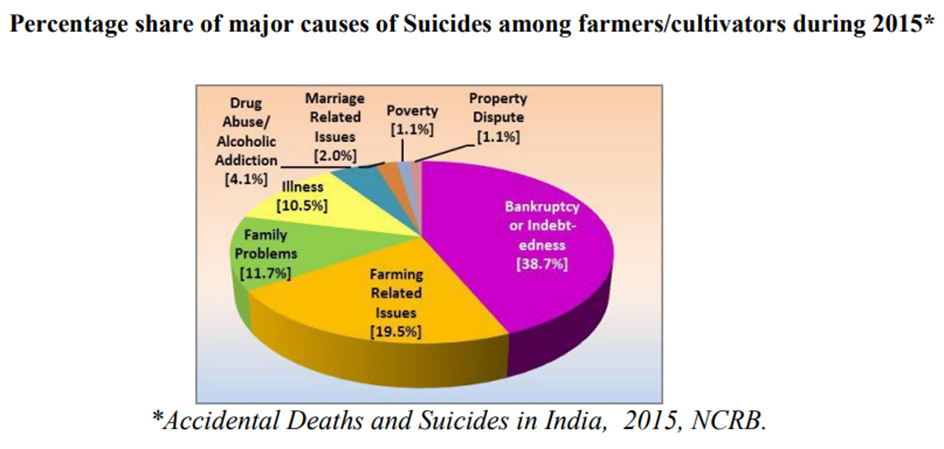Free Courses Sale ends Soon, Get It Now


Free Courses Sale ends Soon, Get It Now



Disclaimer: Copyright infringement not intended.
Context
Details
Reasons behind farmer’s distress
Indebtedness
Poverty
Insurance fails to serve
Collapsing farm prices
Land Improvement
Social and Other Obligations
Moneylenders
Bottlenecks in Institutional finance
Irrigation takes a hit
Marketing is ignored
Modern tech missing
Fragmented supply chains
Lack of food processing clusters
Delayed FCI reforms
Low productivity
Farmers' Suicide

Initiatives taken to reduce debt burden of farmers
Conclusion and Way Ahead
Addressing Indebtedness
Read about the recommendations in detail here: https://pib.gov.in/newsite/PrintRelease.aspx?relid=114860
Flexibility to FCI
Decentralizing the MSP implementation mechanism
© 2024 iasgyan. All right reserved